Upland farmers in England feel that changes to farm support schemes since Brexit have been unfair.
The Basic Payment Scheme (BPS) is being cut in England each year and replacement schemes are mainly focussed on delivering environmental measures.
During a visit to his farm in Northumberland, Dave Stanner explained to the Irish Farmers Journal how many upland farmers have had major issues with the reform.
“The BPS is being taken away and for many farmers there is no opportunity to recoup that money because they are already in an existing agri environment scheme,” he said.
Dave said it is difficult to get into the new Environmental Land Management Schemes (ELMS) if you have an agreement under old agri environment schemes, such as Countryside Stewardship.
“Even if you do manage to swap over to ELMS, you have still lost your BPS, so you have lost a lot of your income,” he added.
In 2024, BPS payments to all farmers in England will be at least 50% lower than they were in 2020.
Farmers with payments over £30,000 will have larger cuts applied and the current plan for England is to phase out BPS altogether by 2027. The new replacement schemes fall under the umbrella of ELMS, with the main scheme for farmers being the Sustainable Farming Incentive (SFI).
Few options
Asides from the outlined difficulties for those already in existing agri environment schemes, many hill farmers feel not enough SFI options are suitable to upland areas.
Instead, a large proportion of measures under SFI apply to lowland regions, such as arable farms.
“The standards for the uplands are nowhere near where they need to be,” Dave Stanner said.
He points out that farmers in lowland areas were typically less dependent on BPS for their income, plus they historically had lower uptake of old agri environment schemes.
Another bureaucratic hurdle is that farmers with designated land, such as Sites of Special Scientific Interest, must get consent from the environmental body Natural England, before applying for ELMS.
“It is hard to stomach for a lot of upland farmers because we have been doing our bit for the environment, but we are the ones losing out now.
“It seems the people who can replace their BPS money most easily are those that
have never been in agri environment schemes before,” Dave said.

Northumberland farmer Dave Stanner.
BPS cuts in England lead to huge farming underspend
Last month, the UK government confirmed long held suspicions that money is being taken away from BPS in England quicker than it is being spent on new farm schemes such as ELMS.
A report stated that unspent funds for farm schemes in England totalled £358m over the past three years and there are concerns that this could lead to a permanent cut in the farm budget.
Other than the huge underspend, Dave said there remains questions about the broader impact of removing BPS in England and replacing it solely with environmental schemes.
It was a process initially started by the previous Conservative government in 2021, although the new Labour administration is clear that it wants to continue with the direction of travel.
“BPS was guaranteed money for farmers operating in a volatile market. It allowed for a reliable food supply because farmers had that cushion,” Dave said.
He suggests removing BPS completely could lead to fluctuations in local food production.
He gave the example of the unsubsidised egg sector where poor financial returns led to severe supply shortages last year.
“If you take BPS away completely, then farmers will be more responsive to the market. They have no choice,” he said.
Devolved differences
Agricultural policy is a devolved matter in the UK, so each of the four regions has autonomy to roll out its own schemes for agriculture and the environment.
Dave’s farm is less than 20 miles from the border with Scotland and he suggests the approach being taken to new schemes there is “probably more farmer friendly”.
He points out that the likes of area-based schemes and headage payments are still available in Scotland, which is in stark contrast to an almost entirely environmental focus in England.
“It will probably change in Scotland eventually too, but I don’t know how it will change and at what pace,” Dave added.
Dave is part of the National Farmers’ Union (NFU) regional uplands group which has been pressing the UK government to make ELMS and specifically SFI, more accessible and financially rewarding for upland farmers.
Progress on that front has been slow, as all lobbying efforts had to be effectively suspended in May 2024 due to the UK general election campaign. Since then, discussions with the new government have been limited and will likely remain that way until a new funding allocation for agriculture is set after the Autumn Budget on 30 October.
“Nobody knows what is going to happen. It has been an ongoing, frustrating time. The NFU has plenty of ideas, but we need to talk to the right people,” Dave said.
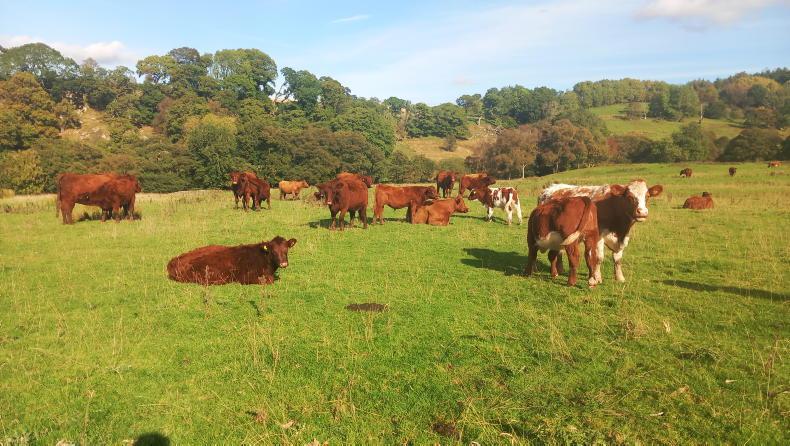
There is a 75-cow suckler herd of Luing cattle on the farm.
Push for rewilding and forests in uplands
The many problems that farmers in upland areas of England face with new schemes cannot be blamed on a tight timeframe for rolling out ELMS.
After all, it is eight years since the Brexit vote and four years since BPS started being phased out in England.
With environmental groups pushing for more for rewilding and tree planting in England, is it possible that the UK government simply want less farming in the uplands?
“There is absolutely a drive for rewilding. There are targets for tree planting too. You can’t plant forests on peat anymore, so the trees have to be planted somewhere,” Dave Stanner said.
Indeed, the UK government states that one of its new ELMS programmes aims to “create wilder landscapes, habitats, rewetted peat and afforestation at a landscape scale”. The scheme, known as Landscape Recovery, is another sore point for many English upland farmers.
Non-farmers can join the scheme, the minimum area is 500 hectares and building an application is extremely complex and costly.
“It fits the likes of big estates or water companies who own land around rivers or dams,” Dave said.
Food production
Whilst there is a strong argument that farmland should be used for food production, there is little doubt that upland farmers produce a lot less food than their lowland counterparts.
“If you are looking for a farming system to sacrifice, then we’re probably near the top of the list,” Dave acknowledged.
However, he argues that upland farms “contribute to nature and biodiversity” much more than intensive farming systems, whilst keeping families and businesses in remote rural areas.
“That is our hope. That is how we need to make our case,” Dave said.
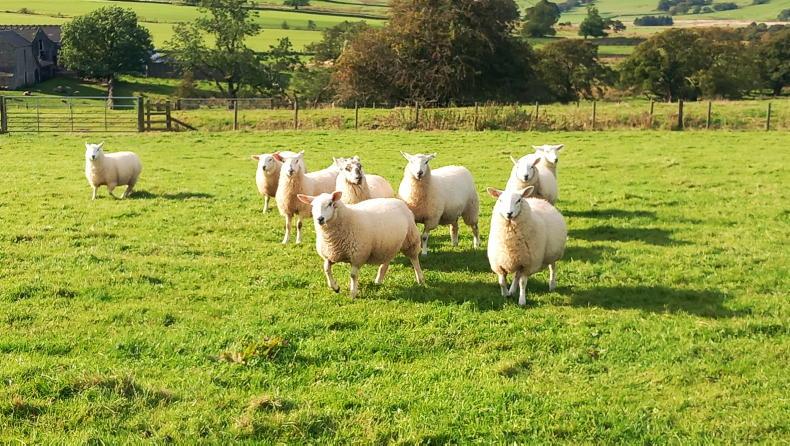
These replacement ewe lambs are Cheviot-EasyDam crosses.
Cutting input costs on 600-acre hill farm
Dave Stanner is mid-way through a 15-year tenancy on a 611-acre upland farm near Hexham in the north-east of England.
A key focus for Dave in recent years has been cutting out input costs for his 75 suckler cows and 600 ewes.
His cattle are mostly pedigree Luing, a hardy breed which originates from the west of Scotland.
Almost half the herd are out wintered on a block of hill land with minimal inputs and are only housed for a few weeks at calving in the spring.
Male progeny are sold as steers at 13-14 months of age and heifers are mainly sold as pedigree breeding stock.
With the sheep, Dave is moving away from a traditional system of Blackface ewes producing Mules which are then put to terminal sires, such as Texel.
He has started using EasyDam genetics, which is a composite breed from New Zealand.
The idea is to breed sheep which require less inputs and perform off grass alone.
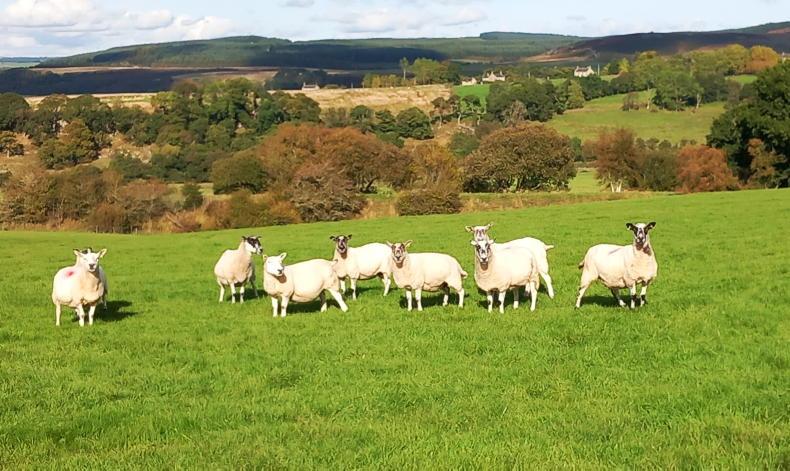
Dave is moving away from keeping traditional Mule and Cheviot ewes.
Upland farmers in England feel that changes to farm support schemes since Brexit have been unfair.
The Basic Payment Scheme (BPS) is being cut in England each year and replacement schemes are mainly focussed on delivering environmental measures.
During a visit to his farm in Northumberland, Dave Stanner explained to the Irish Farmers Journal how many upland farmers have had major issues with the reform.
“The BPS is being taken away and for many farmers there is no opportunity to recoup that money because they are already in an existing agri environment scheme,” he said.
Dave said it is difficult to get into the new Environmental Land Management Schemes (ELMS) if you have an agreement under old agri environment schemes, such as Countryside Stewardship.
“Even if you do manage to swap over to ELMS, you have still lost your BPS, so you have lost a lot of your income,” he added.
In 2024, BPS payments to all farmers in England will be at least 50% lower than they were in 2020.
Farmers with payments over £30,000 will have larger cuts applied and the current plan for England is to phase out BPS altogether by 2027. The new replacement schemes fall under the umbrella of ELMS, with the main scheme for farmers being the Sustainable Farming Incentive (SFI).
Few options
Asides from the outlined difficulties for those already in existing agri environment schemes, many hill farmers feel not enough SFI options are suitable to upland areas.
Instead, a large proportion of measures under SFI apply to lowland regions, such as arable farms.
“The standards for the uplands are nowhere near where they need to be,” Dave Stanner said.
He points out that farmers in lowland areas were typically less dependent on BPS for their income, plus they historically had lower uptake of old agri environment schemes.
Another bureaucratic hurdle is that farmers with designated land, such as Sites of Special Scientific Interest, must get consent from the environmental body Natural England, before applying for ELMS.
“It is hard to stomach for a lot of upland farmers because we have been doing our bit for the environment, but we are the ones losing out now.
“It seems the people who can replace their BPS money most easily are those that
have never been in agri environment schemes before,” Dave said.

Northumberland farmer Dave Stanner.
BPS cuts in England lead to huge farming underspend
Last month, the UK government confirmed long held suspicions that money is being taken away from BPS in England quicker than it is being spent on new farm schemes such as ELMS.
A report stated that unspent funds for farm schemes in England totalled £358m over the past three years and there are concerns that this could lead to a permanent cut in the farm budget.
Other than the huge underspend, Dave said there remains questions about the broader impact of removing BPS in England and replacing it solely with environmental schemes.
It was a process initially started by the previous Conservative government in 2021, although the new Labour administration is clear that it wants to continue with the direction of travel.
“BPS was guaranteed money for farmers operating in a volatile market. It allowed for a reliable food supply because farmers had that cushion,” Dave said.
He suggests removing BPS completely could lead to fluctuations in local food production.
He gave the example of the unsubsidised egg sector where poor financial returns led to severe supply shortages last year.
“If you take BPS away completely, then farmers will be more responsive to the market. They have no choice,” he said.
Devolved differences
Agricultural policy is a devolved matter in the UK, so each of the four regions has autonomy to roll out its own schemes for agriculture and the environment.
Dave’s farm is less than 20 miles from the border with Scotland and he suggests the approach being taken to new schemes there is “probably more farmer friendly”.
He points out that the likes of area-based schemes and headage payments are still available in Scotland, which is in stark contrast to an almost entirely environmental focus in England.
“It will probably change in Scotland eventually too, but I don’t know how it will change and at what pace,” Dave added.
Dave is part of the National Farmers’ Union (NFU) regional uplands group which has been pressing the UK government to make ELMS and specifically SFI, more accessible and financially rewarding for upland farmers.
Progress on that front has been slow, as all lobbying efforts had to be effectively suspended in May 2024 due to the UK general election campaign. Since then, discussions with the new government have been limited and will likely remain that way until a new funding allocation for agriculture is set after the Autumn Budget on 30 October.
“Nobody knows what is going to happen. It has been an ongoing, frustrating time. The NFU has plenty of ideas, but we need to talk to the right people,” Dave said.

There is a 75-cow suckler herd of Luing cattle on the farm.
Push for rewilding and forests in uplands
The many problems that farmers in upland areas of England face with new schemes cannot be blamed on a tight timeframe for rolling out ELMS.
After all, it is eight years since the Brexit vote and four years since BPS started being phased out in England.
With environmental groups pushing for more for rewilding and tree planting in England, is it possible that the UK government simply want less farming in the uplands?
“There is absolutely a drive for rewilding. There are targets for tree planting too. You can’t plant forests on peat anymore, so the trees have to be planted somewhere,” Dave Stanner said.
Indeed, the UK government states that one of its new ELMS programmes aims to “create wilder landscapes, habitats, rewetted peat and afforestation at a landscape scale”. The scheme, known as Landscape Recovery, is another sore point for many English upland farmers.
Non-farmers can join the scheme, the minimum area is 500 hectares and building an application is extremely complex and costly.
“It fits the likes of big estates or water companies who own land around rivers or dams,” Dave said.
Food production
Whilst there is a strong argument that farmland should be used for food production, there is little doubt that upland farmers produce a lot less food than their lowland counterparts.
“If you are looking for a farming system to sacrifice, then we’re probably near the top of the list,” Dave acknowledged.
However, he argues that upland farms “contribute to nature and biodiversity” much more than intensive farming systems, whilst keeping families and businesses in remote rural areas.
“That is our hope. That is how we need to make our case,” Dave said.

These replacement ewe lambs are Cheviot-EasyDam crosses.
Cutting input costs on 600-acre hill farm
Dave Stanner is mid-way through a 15-year tenancy on a 611-acre upland farm near Hexham in the north-east of England.
A key focus for Dave in recent years has been cutting out input costs for his 75 suckler cows and 600 ewes.
His cattle are mostly pedigree Luing, a hardy breed which originates from the west of Scotland.
Almost half the herd are out wintered on a block of hill land with minimal inputs and are only housed for a few weeks at calving in the spring.
Male progeny are sold as steers at 13-14 months of age and heifers are mainly sold as pedigree breeding stock.
With the sheep, Dave is moving away from a traditional system of Blackface ewes producing Mules which are then put to terminal sires, such as Texel.
He has started using EasyDam genetics, which is a composite breed from New Zealand.
The idea is to breed sheep which require less inputs and perform off grass alone.

Dave is moving away from keeping traditional Mule and Cheviot ewes.










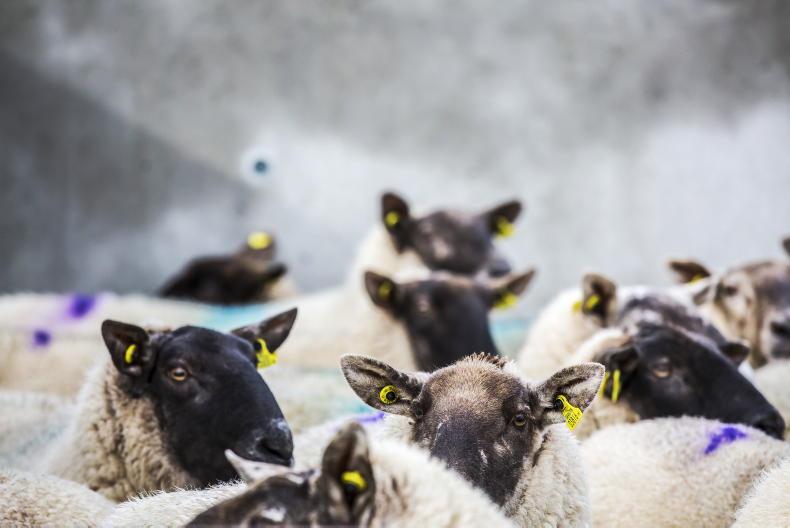

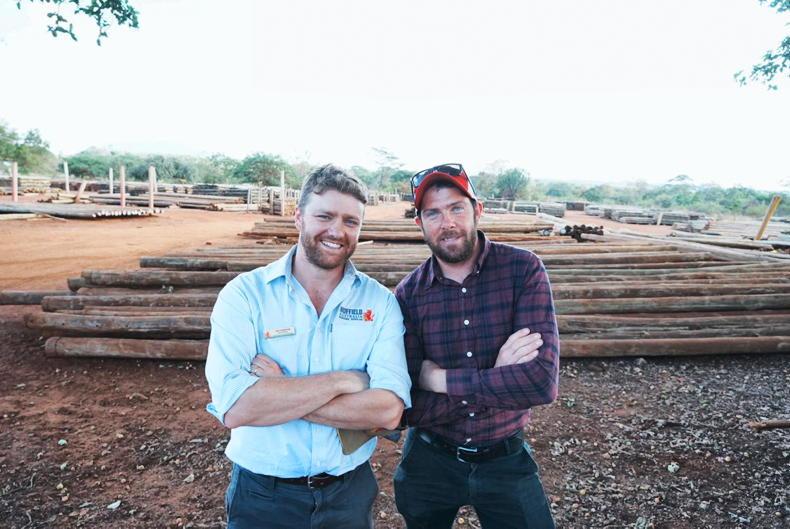
SHARING OPTIONS